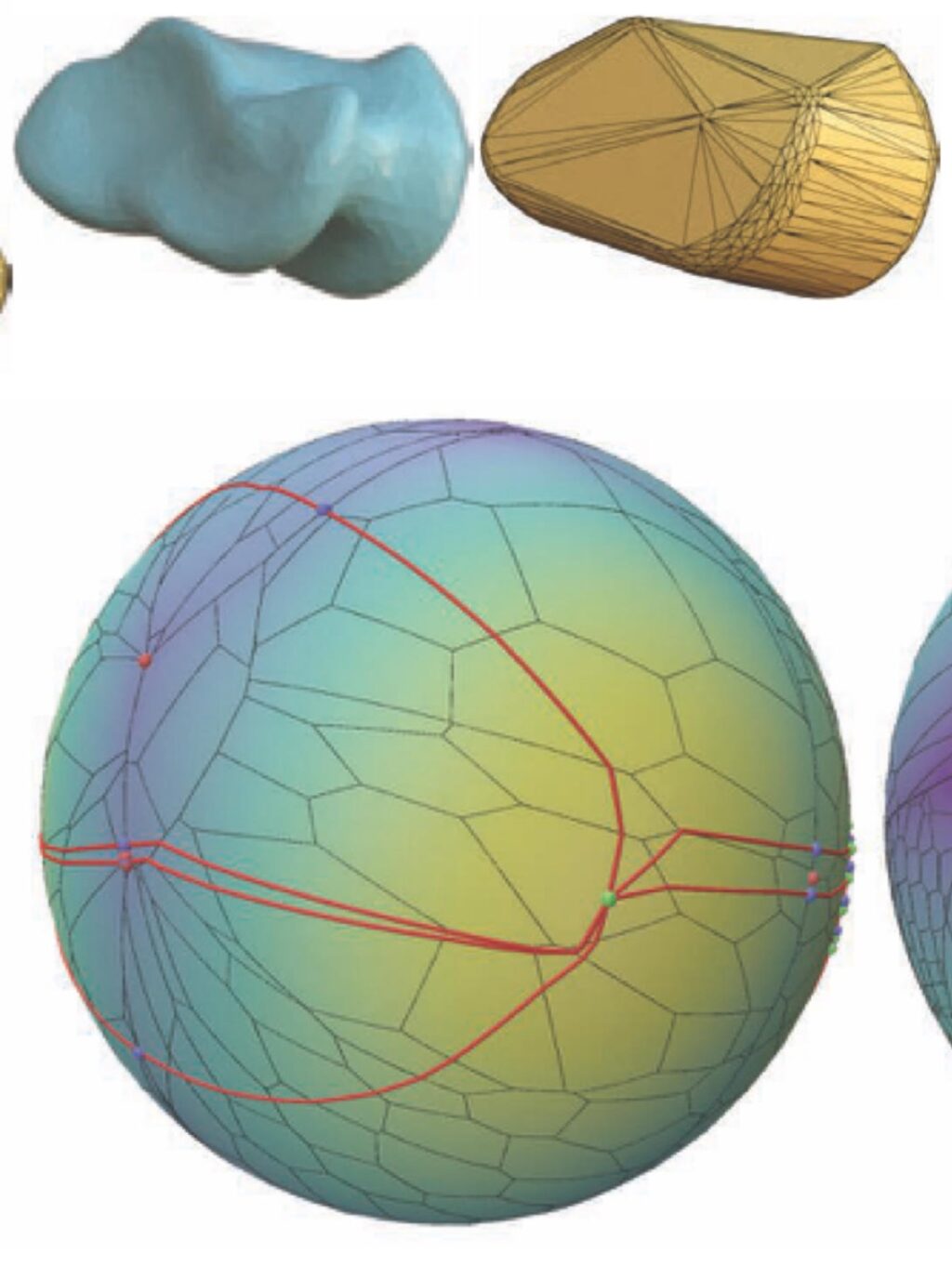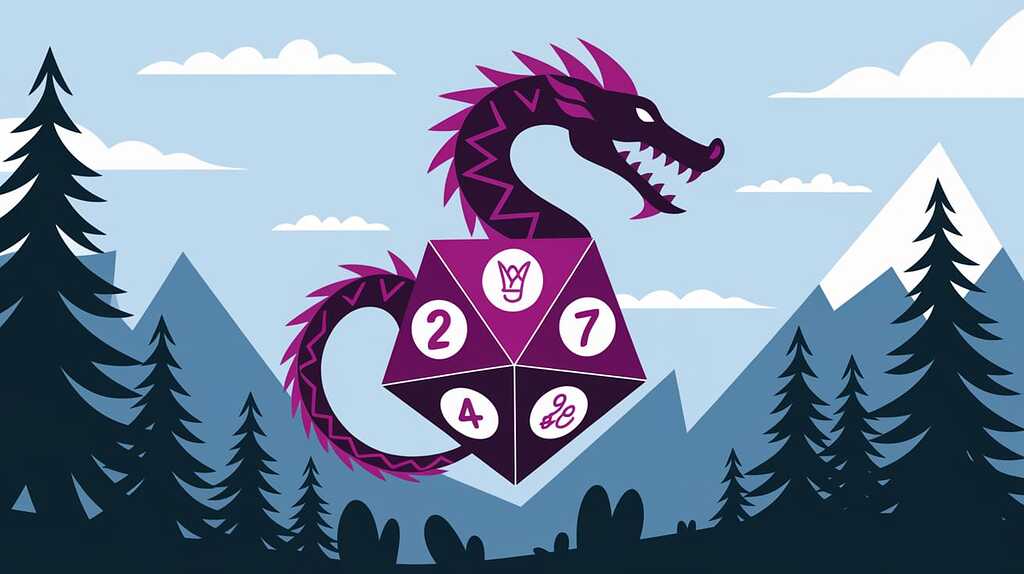## Roll With the Dragons (and Armadillos!): Dice Get a Seriously Cool Makeover
Tired of the same old boring cube-shaped dice? Prepare to have your mind blown, gamers, because the future of rolling is here – and it’s wilder than a goblin’s hoard! Ars Technica has uncovered a revolution in dice design, where mythical beasts and quirky creatures are taking center stage. Forget six-sided monotony, we’re talking dragons with fire-breathing snouts, armadillos with rolling shells, and maybe even a kraken with tentacles for pips!

Experimental Validation

Researchers have made significant strides in ensuring the fairness and randomness of 3D-printed dice with unique shapes. A forthcoming paper in the journal ACM Transactions on Graphics presents the results of experiments conducted on these dice, which were designed to mimic exotic shapes such as a dragon, armadillo, or kitten. The findings suggest that these dice meet the criteria for fairness and randomness, as their experimental results closely matched predicted random outcomes.
The researchers employed computational methods to understand and predict how rigid bodies, such as dice, behave when tossed. They chose dice as the ideal context for exploring this question and ran multiple computer simulations of seven weirdly shaped designs. The simulations were then tested experimentally using 3D-printed versions of the dice, which were tossed between 100 and 1,000 times. The team tweaked each shape until the experimental resting positions were within 3 or 4 percent of the predicted probability outcomes.
The study’s lead author, Hossein Baktash, a graduate student at Carnegie-Mellon University, noted that the team’s goal was to estimate the probability distribution over the possible range of resting configurations using just geometry. While the model did not make perfect predictions from an idealized geometry and physics perspective, it was sufficient for making dice for tabletop games. Baktash acknowledged that there are inevitable tradeoffs between accuracy and practicality, but the results demonstrate the potential of 3D printing and computational methods in creating fair and random dice.

Implications and Practical Applications
Gaming and Tabletop Games
The development of unique dice shapes has significant implications for the gaming industry. Game designers can now create custom dice that enhance gameplay and create new challenges. The use of exotic shapes can add an extra layer of strategy and excitement to tabletop games, making them more engaging and immersive for players.
The possibilities are endless, and game designers can draw inspiration from various sources, such as mythology, folklore, or even real-world animals. For instance, a dragon-shaped die could be used in a fantasy RPG, while an armadillo-shaped die could be used in a game set in the Wild West. The versatility of 3D printing allows game designers to experiment with different shapes and designs, pushing the boundaries of what is possible in tabletop gaming.

The Art of Dice Design
Creating custom dice requires a deep understanding of geometry, physics, and design principles. The process involves combining mathematical models with artistic expression to create unique and visually appealing shapes. Game designers and artists can collaborate to develop custom dice that reflect the game’s theme and style.
The art of dice design is not just about creating visually appealing shapes; it’s also about ensuring that the dice are fair and random. The researchers’ work provides a foundation for game designers to create custom dice that meet the criteria for fairness and randomness. By combining computational methods with artistic expression, game designers can create unique and engaging dice that enhance the gaming experience.
The Future of Dice Manufacturing
The advancements in 3D printing and computer simulations have significant implications for the dice manufacturing industry. Traditional manufacturing methods are limited by the availability of molds and the cost of production. In contrast, 3D printing allows for rapid prototyping and production of custom dice shapes, making it possible to create a wide range of unique dice.
The use of computational methods and simulations enables the creation of dice that meet specific design criteria, such as fairness and randomness. This approach can reduce the need for physical testing and experimentation, making the manufacturing process more efficient and cost-effective. The future of dice manufacturing is likely to be shaped by the intersection of 3D printing, computational methods, and artistic expression.
A Brief History of Innovative Dice
The Origins of Polyhedral Dice
The use of polyhedral dice dates back to ancient civilizations, where different shapes and numbers of sides were used for various purposes, including gaming and divination. The modern polyhedral dice, with its characteristic shapes and numbers of sides, was popularized in the 20th century through the development of tabletop games such as Dungeons & Dragons.
The history of polyhedral dice is a testament to human ingenuity and creativity. From the ancient Romans to modern game designers, people have been pushing the boundaries of dice design, experimenting with new shapes, materials, and numbers of sides. The development of 3D printing and computational methods has opened up new possibilities for innovative dice design, ensuring that the tradition of creative dice-making continues.
The Evolution of Dice Shapes
The evolution of dice shapes reflects the changing needs and tastes of gamers and game designers. From traditional cubes to modern 3D-printed creations, the story of innovation in dice design is a fascinating one. The use of exotic shapes, such as dragons or armadillos, is a relatively recent development, made possible by advancements in 3D printing and computational methods.
The history of dice shapes is a story of continuous experimentation and innovation. Game designers and artists are pushing the boundaries of what is possible, creating unique and engaging dice that enhance the gaming experience. The future of dice design is likely to be shaped by the intersection of technology, art, and human creativity.
The Cultural Significance of Dice
Dice have become an integral part of gaming culture and beyond. From tabletop games to casinos, dice are a ubiquitous feature of many cultures. The cultural significance of dice reflects their ability to evoke emotions, create community, and provide a sense of excitement and unpredictability.
The use of exotic shapes, such as dragons or armadillos, adds a new layer of cultural significance to dice. These shapes can evoke emotions and create a sense of wonder, making the gaming experience more engaging and immersive. The cultural significance of dice is a testament to their enduring appeal and the human need for creative expression and community.
Conclusion
As we conclude our exploration into the world of unconventional gaming dice, it’s clear that the possibilities are endless. From dragons to armadillos, the next generation of dice is poised to revolutionize the way we experience tabletop gaming. The article has highlighted the innovative designs, improved functionality, and unparalleled aesthetic appeal of these unconventional dice. Moreover, we’ve seen how they can enhance gameplay, foster creativity, and create new opportunities for gamers and game designers alike.
The significance of this trend cannot be overstated. As the tabletop gaming industry continues to grow, the demand for unique and immersive gaming experiences will only increase. Unconventional dice designs will play a crucial role in shaping this landscape, pushing the boundaries of what’s possible, and redefining the very fabric of tabletop gaming. Looking ahead, we can expect to see even more innovative designs, collaborations between artists and game designers, and a continued blurring of the lines between art, design, and gameplay.
As we gaze into the future, one thing is certain – the next generation of gamers will be shaped by the tools they use to play. And if the current trend is any indication, those tools will be shaped like dragons, armadillos, and who knows what’s next. As we conclude, let us remember that the true power of gaming lies not in the dice themselves, but in the limitless possibilities they unlock. For in the words of a wise gamer, “The roll is not just a roll, it’s a gateway to a world of endless possibilities.”